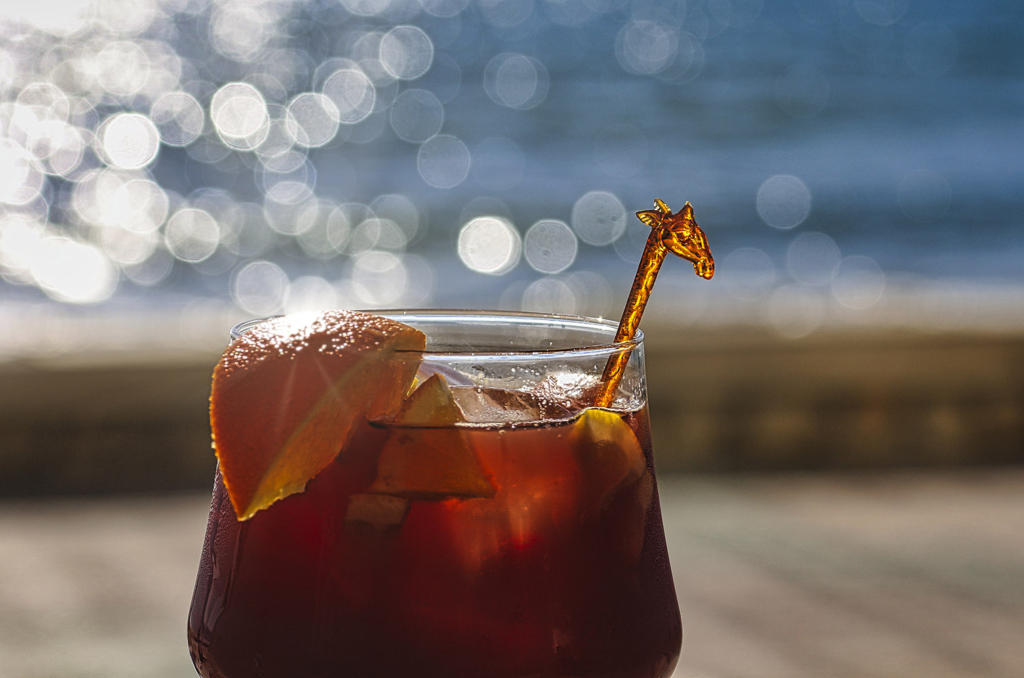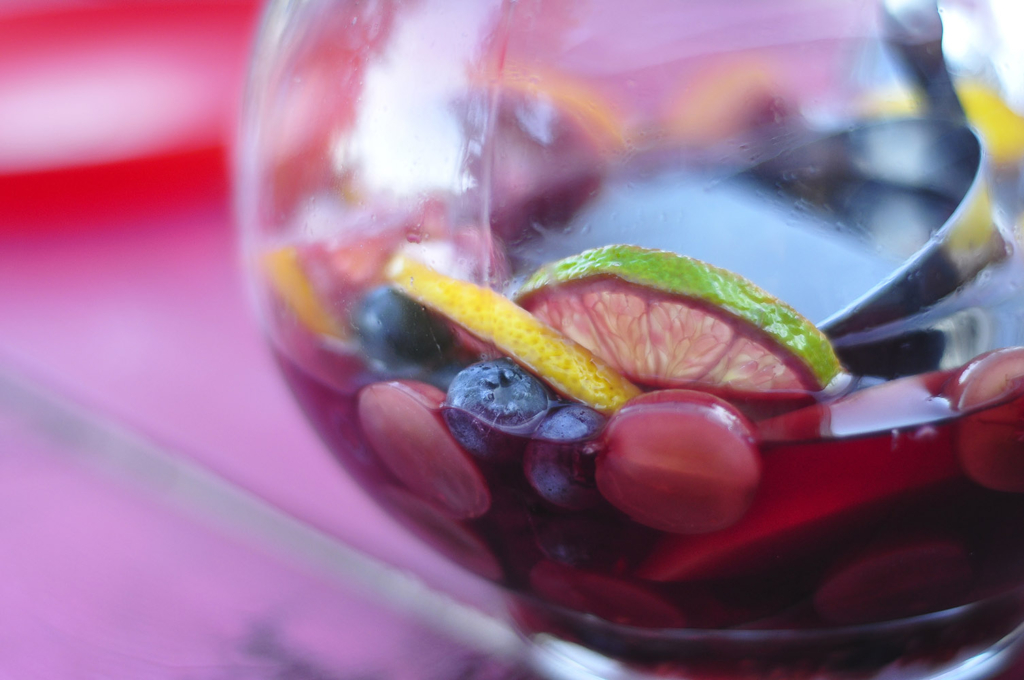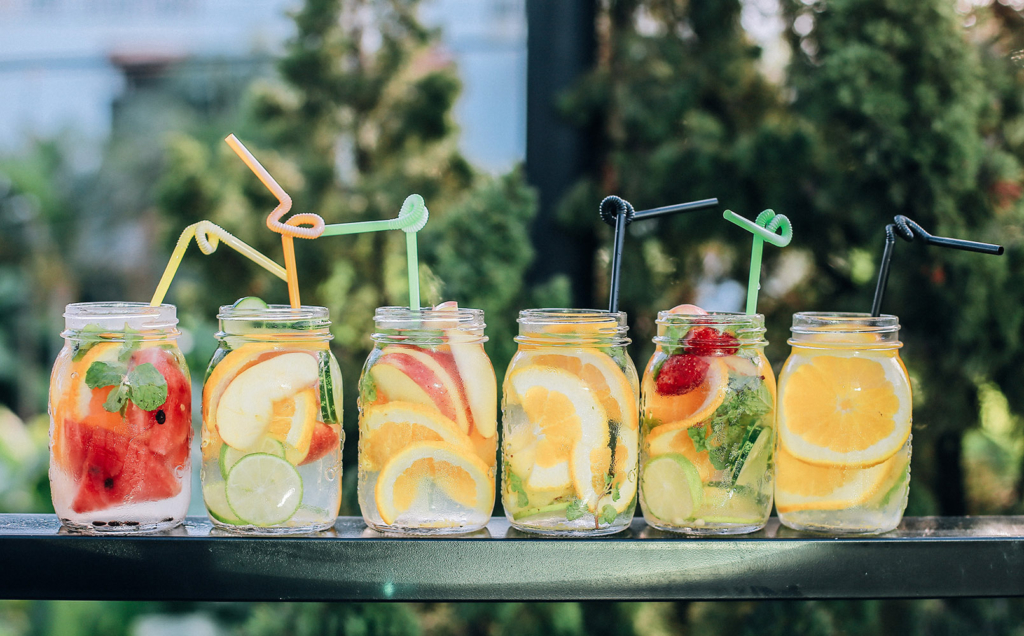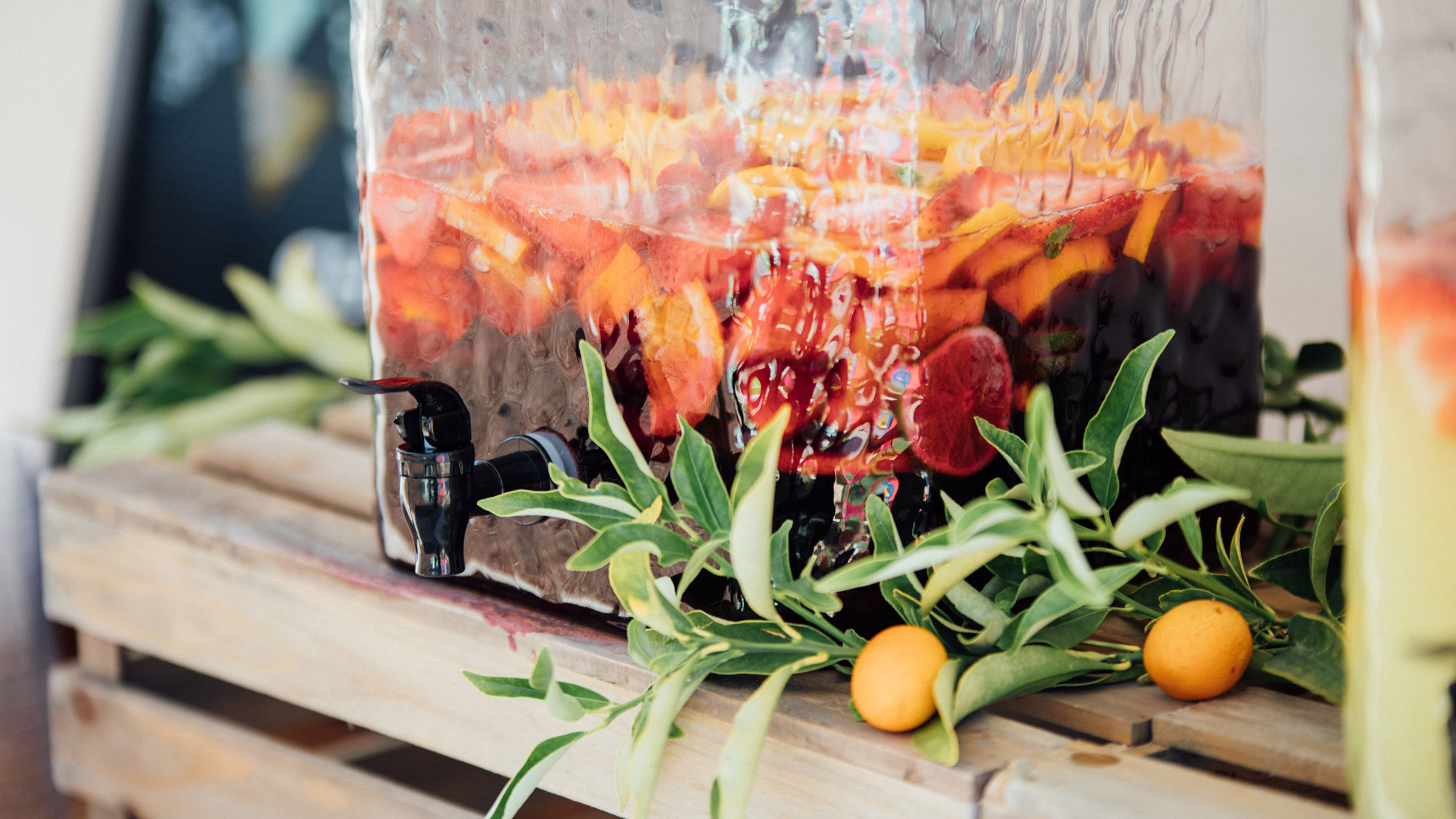Hot summer breezes, open-air beach bars, a jug of chilled sangria… that sounds about right. Sangria is the summer wine cocktail par excellence, the go-to refresher for parched locals and tourists from around the world when they find themselves on the Iberian Peninsula. But what are its origins? What are the most popular variations? And, most importantly, how can you make an authentic sangria at home? We’re about to find out.
The Origins
Wine-based drinks and cocktails are nothing new. As far back as thousands of years ago in Greece and Rome, it was common to mix wine with spices, fruit, sugar and other additives, since water was bacteria-ridden, and it was actually safer to drink wine. Even though these ‘wine cocktails’ aren’t technically considered the first sangria, they did lay the foundations for what would later become a summer drink of choice.
As for actual theories on the invention of the ‘real’ sangria, there’s not only one, but two cultures that claim the credit for its creation. One of the most-cited theories goes back to the early 1800s, when Spanish and Portuguese farmers began mixing their best wine with fresh fruits from their fields, such as apples, peaches and oranges. They would add another serving of alcohol to make it stronger, sugar to sweeten it, and water to lighten the flavour.

However, other sources say that the first version of sangria dates further back the the 1700s, when a group of British sailors travelling to the Antilles islands in the Caribbean were not allowed to drink any alcohol, so they would mask Spanish wine and rum with honey, fruits and spices to make it look like a regular fruit punch in order to dodge the prohibition.
Regardless of the real story, Spain and Portugal have undeniably won the cultural battle. In fact, under European Regulation 251/2014, a drink may only be called ‘sangria’ for retail purposes if it was produced in Spain or Portugal. If it is made outside these two countries, it can only be considered an ‘aromatised wine-based drink’.
The Ingredients
Wine
Sangria is basically a wine fruit punch, so it makes sense that the best wines to use are those with fruity aromas and flavours, especially young varieties made with Grenache or Tempranillo grapes. Campo Viejo Tempranillo is a Spanish Rioja red that’s perfect for highlighting the fruit blend while supporting the tannins and acidity of the wine, with berry hints that go well with the rest of the fruits. Another option often recommended, especially if you’re miles away from Spanish wines, is a Maipe Malbec, an Argentinian red wine that has the ideal structure and adaptability to complement a variety of fruits in the sangria.

For a white sangria, also called clarea, the best wines are a Mirassou Pinot Grigio, a refreshing wine with pear, peach and citric undertones, or a Freixenet Brut sparkling wine with enough acidity to lower the sweetness of the blend.
Fruits
The versatility of sangria is that it allows you to add as many or as few different kinds of fruits as you want, although seasonal fruits are always best. From peaches to apples, berries, oranges, grapes and pineapple, there’s no wrong choice when it comes to selecting the fruits you’ll use – with the exception of banana, which may make the drink too thick. The key is to mix the sangria with the fruits well before serving, allowing a few hours (or even overnight) for the fruits to marinate in the wine and absorb the flavour.
There are, however, certain methods for properly cutting the fruit. They should be either diced or sliced, but never crushed. The smaller the pieces, the better, so they soak properly into the wine, and also, so they can be easily eaten while you’re drinking. And as a rule of thumb, the fruit should account for about 25% of the capacity of the jug.

[Credit: Divya Thakur/Wikimedia Commons]
Additional Liquors
While wine is the main source of alcohol for sangria, it’s often also mixed with other liquors to enhance its flavour and make it stronger. Note that for it to be considered true sangria, the alcohol volume should be between 4.5% and 12%, so adding too much or too little might result in a different drink. Some like to add triple sec or Cointreau for an orange-based touch, while others go for brandy or vermouth. Regardless of the liquor of choice, the ideal proportion should be 25ml per 1 litre of wine.
The Variations
Portuguese White Port Sangria
It may not be a widely known fact, but Portugal is as much a wine-making country as Spain. Given that the Portuguese also take credit for inventing sangria, it’s no surprise that they have their own version as well. The original recipe is made with authentic white Portuguese Port, like Borges White Reserve Port, or any other Port-style wine, with the addition of cinnamon sticks and branches of mint. Strawberries and oranges are the only fruits added in this version. Feel like adding an especially authentic touch? Pour in a serving of Licor Beirão, Portugal’s national drink.
Sangria Slushies
Icy treats aren’t just for kids. This grown-up version is as refreshing and delicious as any summer dessert, with the added bonus of… well, wine. And the good thing is that the options are endless when it comes to the fruits and garnishes to add. For example, you can go for a red wine sangria with frozen blueberries, strawberries and raspberries, or choose a white wine and blend with fresh peaches and peach liqueur.

Pacific Blue Sangria
You won’t find this variation as easily in Spanish or Portuguese chiringuitos. But it’s still a popular take on the classic wine punch found in restaurants around the world, and you can easily make it yourself. Just mix ½ cup of Blue Curaçao with one bottle of white wine, add in some chunks of pineapple and slices of oranges, a carbonated lime beverage, and sugar as desired.
Sparkling Sangria
For a more elegant alternative, try swapping your wine of choice for a bottle of Champagne, Prosecco or Cava. Any dry sparkling wine is perfect, and since they’re typically less sweet than regular wine, the result is a more refreshing and lighter drink. If it’s still too sweet, you can always add more lemon juice, and if it’s not sweet enough, add honey or agave. Best fruits to go with it? Blueberries, strawberries and orange slices.
Classic Sangria Recipe
2 bottles of red wine
½ cup of triple sec (or Cointreau)
½ cup of honey or simple syrup
Juice of 2 oranges
2 sliced oranges
1 sliced apple
1 handful of grapes
1 handful of strawberries
½ cup of sliced pineapple
1 sliced lemon
500ml of soda water
Ice
In a jug, add wine, triple sec (or liqueur of choice), honey and orange juice. Stir. Add the fruit and let sit in the fridge for at least two hours. Add soda water and ice, and serve.














Sorry, the comment form is closed at this time.